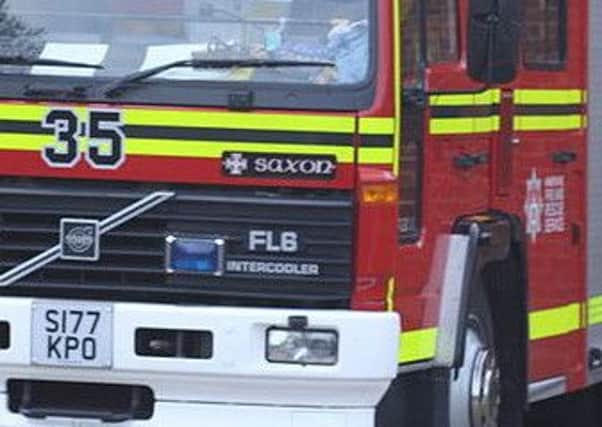Hampshire firefighters in 70 operations to move obese people


The figure is revealed after a Freedom of Information Act request by fire services across the country.
Hampshire Fire and Rescue Service’s response reveals that in the financial year 2012-13, there were 26 instances of moving obese people - termed bariatric rescues - at a cost of £9,728.
Advertisement
Hide AdAdvertisement
Hide AdIn 2013-14, there were 15 rescues, costing £7,296, in 2014-15 22 rescues costing £12,768 and in 2015-16, seven rescues costing £2,736.
Most rescues were from buildings, but the latest figures include an obese percon moved from grassland and another from a cemetery.
HFRS Station Manager for Community Safety, Phil Barrett said: ‘Hampshire doesn’t have the same level of bariatric rescues as other counties.
‘We and our partners promote healthy living as part of our joint prevention activities.
Advertisement
Hide AdAdvertisement
Hide Ad‘We do attend these incidents to support partner agencies when they request assistance, in order to provide medical care to a resident.
‘This is always done with the utmost care, respecting the person’s dignity while ensuring their welfare and safety.’
The FoI requests shows that nationally the number of obese people who need to be moved by firefighters is on the rise.
Data obtained by BBC Radio 5 shows there were 944 incidents where people needed help in 2015/16, up a third on the 709 in 2012/13.
Advertisement
Hide AdAdvertisement
Hide AdThe figures were collected from all 50 fire and rescue services in the UK.
Rescuers often used lifting equipment, special slings and sometimes had to remove windows, walls and banisters, frequently in people’s homes.
The cases included helping the ambulance service with lifting equipment to remove an “extremely large” patient who had been stuck on the sofa for days and carrying a 40-stone man from the upstairs of a pub.
A number of incidents involved moving obese people who had died from their homes to an undertaker’s ambulance.
Advertisement
Hide AdAdvertisement
Hide AdSouth Wales Fire and Rescue Service had the highest number of incidents in 2015/16 at 77, while Mid and West Wales Fire and Rescue Service had 46.
Humberside Fire and Rescue Service had 45, London Fire Brigade had 38 and Lincolnshire Fire and Rescue Service had 37.
Chris Jones, watch manager from South Wales Fire Service, told the BBC some of the rescues were very complicated.
‘Some of these incidents have become protracted overnight while we’ve needed to change certain elements to the building to make that rescue safe before we can bring the patient out,” he said.
Advertisement
Hide AdAdvertisement
Hide Ad‘If we are doing what we call an external rescue where we’re taking the patient out through a window, quite commonly we’ll remove the window frame itself and we will actually sometimes drop courses of brickwork down to create that space.
‘Internally we might have to take doors off, move furniture - we may even have to put supporting systems into the house to make sure everything’s structurally sound, as well.’
Dr David Kerrigan, one of the UK’s leading bariatric surgeons, said patients who become that big ‘are prisoners, not just within their own body but within their own home’.
He told the BBC: ‘The bigger and bigger they get, the less confident they feel about engaging with the outside world.
Advertisement
Hide AdAdvertisement
Hide Ad‘They are big users of the internet - so they don’t even go out to shop any more and do a lot of their socialising using social media, and they just become more and more trapped.’
Tam Fry, from the charity National Obesity Forum, told BBC Radio 5 live the figures were on the increase because the obese were getting bigger.
He said: ‘This is not about more people being obese. This is about those who are already obese now getting to a size where they now need assistance.’
Mr Fry said the figure could be a lot higher.
‘Senior doctors I speak to say there are many people who don’t leave their homes so they don’t even put themselves in a position where they may need to be rescued.
‘They are scared of being seen in public.’
In 2012, a new category was created for the fire and rescue services to report “bariatric rescues” involving obese patients.